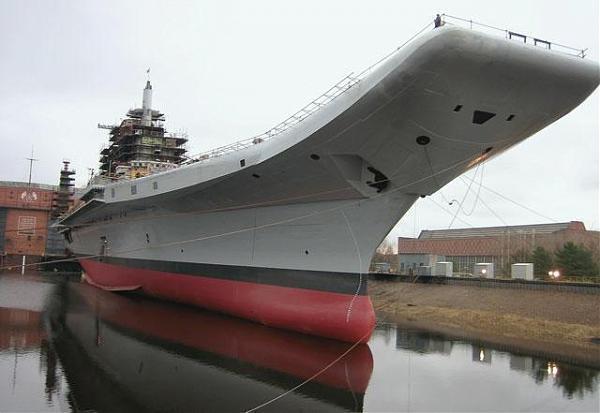All IN & ICG OTOs are SRGM. Dart is just an ammo that can be purchased. Guidance can be via Oerlikon or Elta radars or Israeli/Indian EO suites. OTO offers extended engagement range against supersonic missiles, giving more reaction time & heavier ammo to knock them out.agupta wrote:Is the OTO-76 CIWS system planned for the Viky the "standard" one we've licensed, or the more modern Super Rapid with DART ammo. included?
Sponsons can be addedSid wrote:But Vik already got zif 121 launchers where you said it will have air defence guns?
The outfitting gives an indication of the role. Two clusters of LRSAM for air defence and two clusters of BrahMos for Land Attack.RajitO wrote:Can you quote from IN sources about how they plan to use the Kolakata class ships, either independently or in a CBG?
Again CBG is a US concept not relevant to Indian environment or operations. Most forum members either consider US or Russia/FSU as Gold Standard and then try to forcefit or benchmark Indian systems/operating procedures against it, that in reality is an exercise in fantasy.RajitO wrote:One of the underlying themes on this thread is that we are transitioning to a new kind of CBG doctrine which will require a degree of specialization in platforms.
US carriers carry 2x or 2.5x fighters as Indian (or any other) carriers. Typically they operate 3 days of intensive Air to Air or Air to Sea or Air to Land sorties (up to 200 per day) and on fourth day withdraw to repair & replenish. Neither does India (or any other nation) have the immense logistics capability that US has.
FWIW even in WW2, when the Royal Navy was at its strongest, it could not keep up with US Navy in the Pacific
http://en.wikipedia.org/wiki/British_Pacific_Fleet
However, this fleet performed poorly. Reasons are -The British Pacific Fleet was one of the largest fleets ever assembled by the Royal Navy. By VJ Day it had four battleships and six fleet aircraft carriers, together with fifteen smaller aircraft carriers, eleven cruisers, and numerous smaller warships, submarines, and support vessels.
The Admiralty had proposed a British role in the Pacific in early 1944 but the initial USN response had been discouraging. Admiral Ernest King, Commander-in-Chief United States Fleet and Chief of Naval Operations, an alleged Anglophobe,[2] was reluctant to concede any such role and raised a number of objections, including the requirement that the BPF should be self-sufficient.
The Royal Navy had been used to operating close to its bases in Britain, the Mediterranean or the Indian Ocean and infrastructure and expertise were lacking.......The US Pacific Fleet had assembled an enormous fleet of oilers and supply ships of every type. Even before the war, it had been active in the development of underway replenishment techniques. The Admiralty realised that it needed a great deal of new equipment and training, in a short time and with whatever it had to hand.
Even after 11 months from Feb 1944 to Jan 1945, the Royal Navy struggled to put together a supply train.On 8 February 1944 the First Sea Lord, Admiral of the Fleet Sir Andrew Cunningham, informed the Defence Committee that 91 ships would be required to support the BPF......This had to be balanced against the shipping needed to import food for the civilian population of the UK. In January 1945, the War cabinet was forced to postpone the deployment of the fleet by two months due to the shortage of shipping.
Some more data on logistics cost
So Indian/British/Russian/French/Italian/Spanish Navies cannot have CBG type concepts.While it was apparent that Australia, with its population of only about seven million could not support the projected 675,000 men and women of the BPF, the actual extent of the Australian contribution was undetermined. The Australian government agreed to contribute to the support of the BPF but the Australian economy was fully committed to the war effort and manpower and stores for the BPF could only come from taking them from American and Australian forces fighting the Japanese.[10] Unfortunately, Admiral Sir Bruce Fraser arrived in Sydney on 10 December 1944 under the mistaken impression that Australia had asked for the BPF and promised to provide for its needs. Two days later, the Acting Prime Minister of Australia Frank Forde announced the allocation of £21,156,500 for the maintenance of the BPF. In January 1945, General of the Army Douglas MacArthur agreed to release American stockpiles in Australia to support the BPF. The Australian government soon became concerned at the voracious demands of the BPF works programme, which was criticised by Australian military leaders. In April 1945, Fraser publicly criticised the Australian government's handling of waterside industrial disputes that were holding up British ships. The government was shocked and angered but agreed to allocate £6,562,500 for BPF naval works. Fraser was not satisfied. On 8 August 1945 Prime Minister of the United Kingdom Clement Attlee felt obliged to express his regret for the misunderstandings to the Australian government
Primary role for Vikrant/Vikramaditya/Viraat will be the same as British carriers at Falklands - Air Defence of Fleet & AEW/ASW aircraft.
Land Attack will be carried out by Destroyer fired Brahmos, Frigate fired Brahmos & Klub, Type 877 EKM fired Klub, Arihant fired Shourya & Subhadra fired Prithvi.
Secondary roles will include Anti Ship, but Destroyers/Frigates are better equipped to do that. Brahmos/Klub will take enemy ships detected 300 km away faster than MiG29K/Tejas flying 200 km subsonic & launching Kh-35 100 km away, again subsonic.
Finally, if air & submarine threats are neutralized, then MiG29K may do Chittagong type strikes, after SEAD/DEAD first.
MSM gets ideas reading BR. As explained earlier, an aircraft carrier needs heavier defences.RajitO wrote:Source? All the MSM have it down as desi AK630 but it wouldn't be the first time they are wrong, so if you know different feel free to share.





